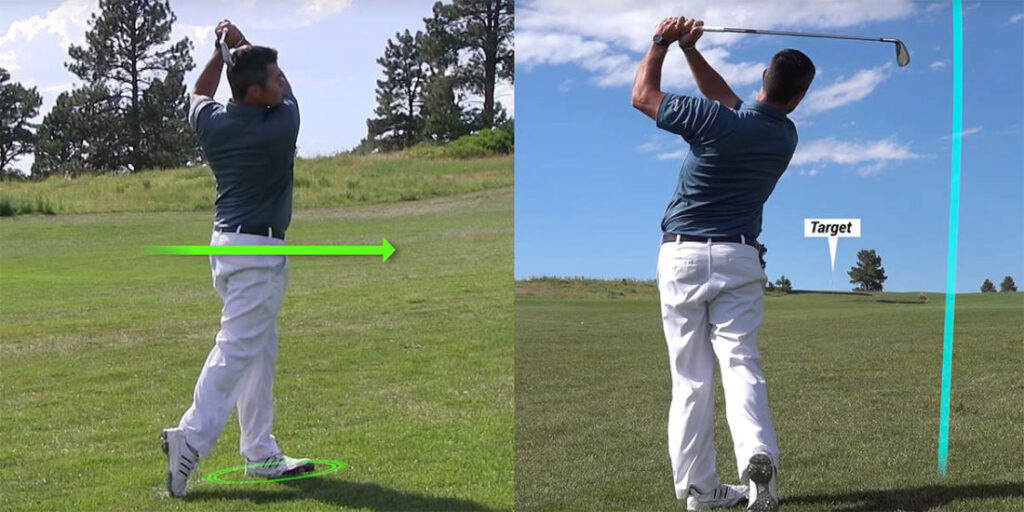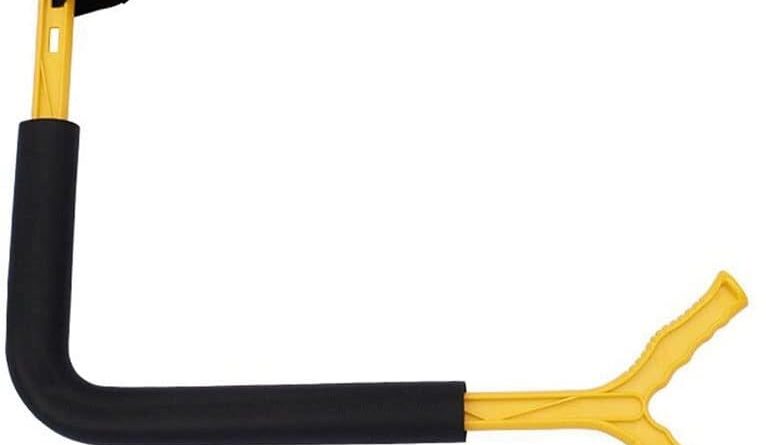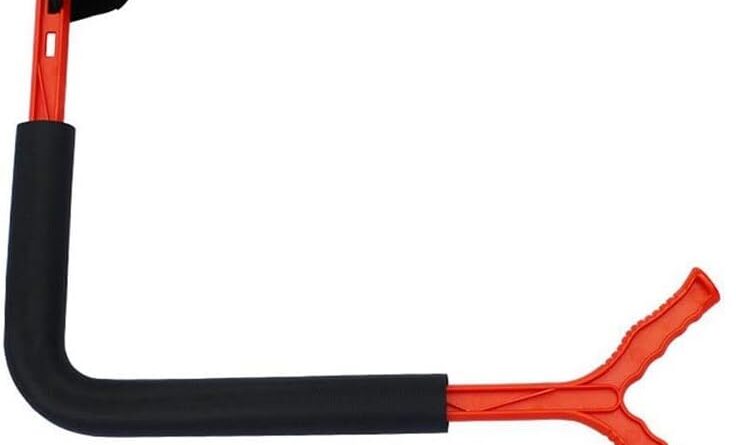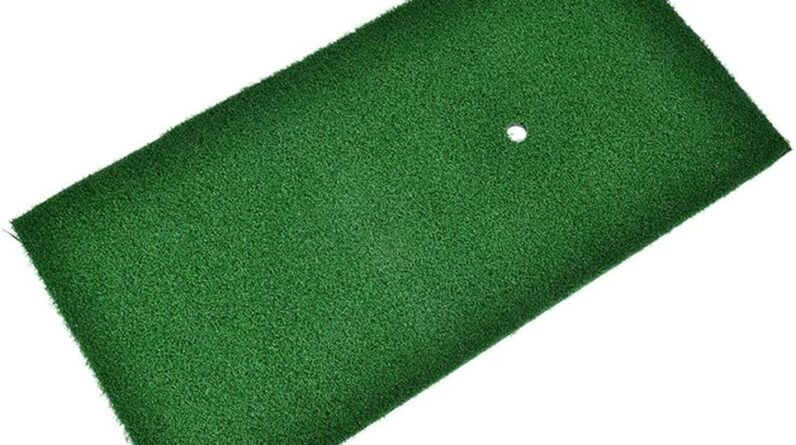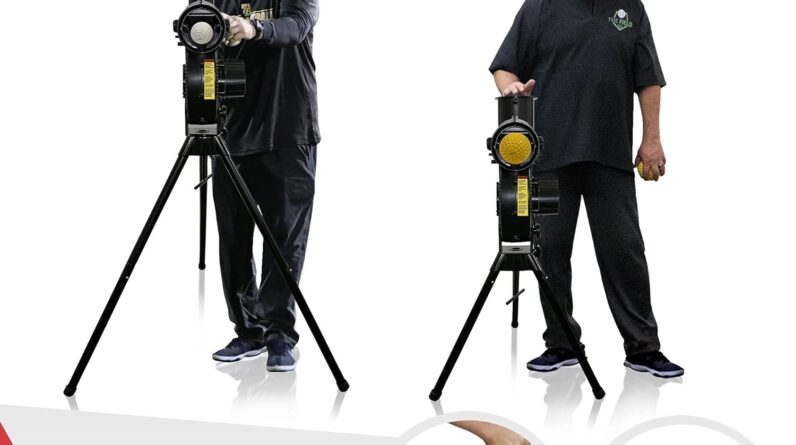Imagine standing on a golf course, ready to take your swing. As you glance at the terrain ahead, you notice that the ball is positioned on an uphill slope. In that moment, a question arises: how do you adapt your club selection to accommodate for the different angles presented by uphill and downhill lies? Understanding the nuances of these situations can greatly impact your golf game, allowing you to make informed decisions that lead to successful shots. In this article, we will explore practical tips and strategies for adjusting your club choice when faced with uphill and downhill lies, helping you elevate your golfing experience to new heights.

Factors to Consider
When faced with an uphill or downhill lie on the golf course, there are several important factors to consider in order to make the best club selection and adjust your shot accordingly.
Slope of the Lie
The first factor to consider is the slope of the lie. Is the ball above your feet or below your feet? This will affect how the ball will flight and how you should adjust your setup and swing. Uphill lies will typically result in a higher ball flight, while downhill lies will produce a lower ball flight.
Distance to the Target
The distance to the target is another crucial factor when choosing a club for uphill and downhill lies. Uphill lies will generally add extra distance to your shot, while downhill lies will decrease the distance. It’s important to take this into account when selecting a club, as choosing the wrong club could result in coming up short or overshooting the target.
Wind Conditions
In addition to the slope of the lie and distance to the target, wind conditions must also be taken into consideration. Wind can greatly affect the flight of the ball, especially when faced with uphill or downhill lies. Strong headwinds will make uphill shots play even longer, while tailwinds can help with distance on downhill shots. It’s important to factor in the direction and speed of the wind when choosing a club and adjusting your shot.
Course Conditions
Lastly, the course conditions should be considered when adjusting for uphill and downhill lies. Are you playing on a firm or soft ground? Is the green fast or slow? These factors can greatly impact how the ball will react once it hits the ground. Firm ground will result in more roll, while soft ground will decrease the roll. Additionally, fast greens will require different adjustments compared to slower greens. Taking these course conditions into account will help you make better club selections and adjust your shots effectively.
Uphill Lies
When encountering an uphill lie, there are specific considerations to keep in mind in order to make the necessary adjustments.
Club Selection
Choosing the right club for an uphill lie is crucial to ensure you have enough distance and control. Since uphill lies tend to add extra distance to your shot, it’s important to consider using a club with less loft. For example, if you would normally use a 7-iron for a certain distance, you may want to opt for a 6-iron instead.
Effect on Ball Flight
Uphill lies tend to promote a higher ball flight due to the slope. When addressing the ball, keep in mind that the slope will naturally de-loft the clubface. As a result, the ball may spin more and have a higher trajectory. Adjusting your swing to account for this higher ball flight will help you make better contact and achieve the desired distance.
Adjusting for Distance
Since uphill lies typically add distance to your shots, it’s important to make the necessary adjustments to avoid overshooting the target. One way to adjust for the added distance is to grip down on the club. By gripping down, you effectively shorten the length of the club and reduce the amount of distance the ball will travel.
Compensating for Elevation
When dealing with an uphill lie, it’s crucial to compensate for the elevation by aiming slightly left of the target. Since the ball will naturally curve to the right (for right-handed golfers), aiming left will help counteract the slope and ensure the ball finishes near the target.
Downhill Lies
Downhill lies present their own set of challenges, and there are specific techniques to help you adjust your club selection and shot accordingly.
Club Selection
Choosing the right club for a downhill lie is just as important as with an uphill lie. Since downhill lies typically reduce distance, it’s important to consider using a club with a little more loft. For example, if you would normally use a 7-iron for a certain distance, you may want to use an 8-iron instead.
Effect on Ball Flight
Downhill lies tend to produce a lower ball flight due to the slope. This lower trajectory can result in less spin and a different ball flight compared to a flat lie. When addressing the ball, it’s important to adjust your setup to accommodate for the lower ball flight and ensure solid contact with the ball.
Adjusting for Distance
To compensate for the reduced distance on downhill lies, you may need to grip up on the club. Gripping up effectively lengthens the club and helps you achieve the necessary added distance. Remember to make the adjustment in grip pressure as well to ensure control and accuracy in your shot.
Compensating for Elevation
Similar to uphill lies, aiming slightly left of the target is the key to compensating for elevation on downhill lies. Since the ball will naturally curve to the left (for right-handed golfers), aiming slightly left will help counteract the slope and bring the ball closer to the target.
Tips for Uphill Lies
When facing an uphill lie, these tips will help you make the necessary adjustments and execute your shot successfully.
Visualize the Shot
Before addressing the ball, take some time to visualize the shot in your mind. Imagine the ball taking off with a higher trajectory and landing closer to the target. This mental visualization will help prepare your mind and body for the shot.
Adjust Your Setup
In order to compensate for the slope, adjust your setup by positioning yourself so that your body is parallel to the slope. This means angling your shoulders, hips, and feet with the slope. This setup will help you maintain good balance throughout your swing.
Maintain Good Balance
Speaking of balance, it’s crucial to maintain good balance when hitting uphill shots. Uphill lies can make it tempting to lean back or lose your balance during the swing. Focus on keeping your weight evenly distributed and your center of gravity stable throughout the swing.
Stay Smooth and Relaxed
When faced with an uphill lie, it’s important to stay smooth and relaxed in your swing. Trying to muscle the ball or swing too aggressively can lead to poor contact and inconsistent results. Trust in your technique and let the slope do some of the work for you.
Avoid Overcompensation
While it’s important to adjust for the slope, be mindful of not overcompensating. It’s easy to aim too far left or make excessive adjustments to your setup and swing. Find the right balance of adjustment without going too extreme.
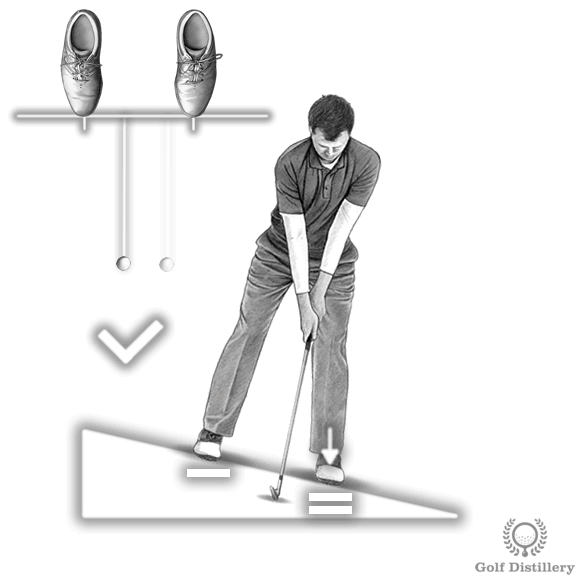
Tips for Downhill Lies
When confronted with a downhill lie, these tips will help you make the necessary adjustments and execute your shot effectively.
Visualize the Shot
Before starting your swing, mentally picture the ball flying lower and landing closer to the target on a downhill lie. This visualization will help you prepare for the specific shot you’re about to hit.
Adjust Your Setup
To accommodate for the slope, adjust your setup by aligning your shoulders, hips, and feet slightly with the slope. This adjustment will help you maintain stability and balance throughout your swing.
Keep Your Weight Forward
Maintaining proper weight distribution on a downhill lie is crucial for a successful shot. Keep a majority of your weight on your front foot to ensure clean contact with the ball and prevent any mishits or stubbed shots.
Control Your Clubhead Speed
Controlling your clubhead speed is key when hitting downhill shots. The slope and gravity will naturally accelerate the clubhead, so it’s important to have a smooth and controlled swing. Resist the temptation to swing too hard or aggressively and focus on maintaining a steady tempo.
Beware of Overswinging
Downhill lies can make it tempting to overswing in an attempt to maximize distance. However, overswinging can lead to loss of control and inconsistent contact. Trust in your technique and focus on making solid, controlled swings to ensure good ball striking.
Practice Techniques
To become proficient at adjusting for uphill and downhill lies, incorporating specific practice techniques can greatly enhance your skills and confidence on the golf course.
Repetition and Feedback
Repetition is key when practicing to adjust for uphill and downhill lies. Set up practice stations on the range that simulate these lie conditions and hit multiple shots from various slopes. Sustained practice with feedback will help you develop muscle memory and refine your adjustments.
Using Alignment Aids
Using alignment aids during practice sessions can be incredibly helpful when working on adjusting for uphill and downhill lies. Place alignment sticks or other visual markers to help you visualize the slope and practice setting up and swinging accordingly. This visual feedback will assist in making the necessary adjustments.
Working with a Teaching Professional
Seeking guidance from a teaching professional is highly recommended when refining your skill in adjusting for different lies. A golf instructor can assess your swing mechanics, provide personalized feedback, and offer specific drills and exercises to help you improve your ability to adjust for uphill and downhill lies.
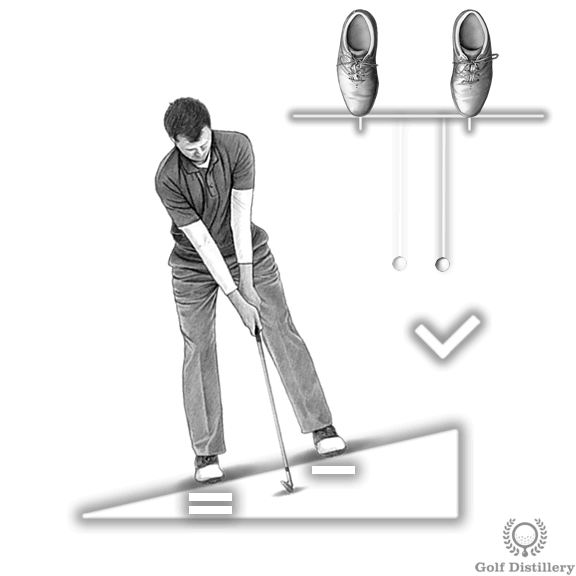
Club Selection Strategies
Choosing the right club for uphill and downhill lies requires a combination of personal experience, club distance knowledge, and trial and error.
Personal Experience and Comfort
Your personal experience and comfort level with specific clubs play a significant role in club selection. As you gain more experience playing on different lies, you’ll develop a feel for which clubs work best for specific uphill and downhill shots. Trust your instincts and go with clubs that have proven successful in the past.
Club Distance Chart
Having a club distance chart can be a valuable tool when choosing clubs for uphill and downhill lies. This chart allows you to refer to specific club distances for certain yardages, taking into account uphill and downhill considerations. Keeping a personalized club distance chart can help you make more informed club selections based on the lie and distance to the target.
Trial and Error
Trial and error is a natural part of learning to adjust for uphill and downhill lies. Through trial and error, you’ll gain valuable insight into which clubs work best for specific situations. Don’t be afraid to experiment with different clubs and evaluate the results. This experimentation will ultimately lead to a better understanding of which clubs to choose for uphill and downhill lies.
Understanding Loft and Lie
Understanding the relationship between loft and lie is crucial when selecting clubs for different lies. Clubs with more loft will tend to perform better on uphill lies, as the added loft helps launch the ball higher and counteract the slope. Conversely, clubs with less loft are often more suitable for downhill lies, as they produce a lower ball flight and help control distance.
Considerations for Wind and Course Conditions
When adjusting for uphill and downhill lies, it’s important to take into account the wind and various course conditions.
Wind Direction and Speed
The direction and speed of the wind can greatly influence how the ball will react on uphill and downhill shots. A strong headwind can make uphill shots play even longer, while a tailwind can assist with distance on downhill shots. Paying attention to wind conditions and factoring them into your club selection and shot adjustments is essential for optimal results.
Slope Gradient
The gradient of the slope itself is another important consideration when adjusting for uphill and downhill lies. Steeper slopes will have a more pronounced effect on the ball flight and require more significant adjustments. Conversely, more gentle slopes may require subtle adjustments. Understanding the slope gradient and its impact on the shot will help you make more accurate adjustments.
Firmness of the Ground
The firmness of the ground can greatly impact the roll and trajectory of the ball after it lands. Firm ground will result in more roll, while softer ground will decrease the roll. Taking note of the ground conditions and factoring them into your shot adjustments will help you gauge the required distance and shot trajectory more effectively.
Green Speed
The speed of the greens is another factor to consider when adjusting for uphill and downhill lies. Faster greens will require adjustments to your shot in order to control distance and ensure the ball finishes near the target. Familiarize yourself with the speed of the greens before your round and take note of any variations throughout the course.
Pin Position
Lastly, knowing the pin position is important when adjusting for uphill and downhill lies. The location of the pin on the green will determine your target area and affect your shot strategy. Take note of the pin position and adjust your club selection and shot accordingly to give yourself the best chance of hitting the target.

Importance of Practice
Practice is essential when it comes to adjusting for different lies on the golf course. Here are some key reasons why dedicating time to practice these adjustments is crucial.
Developing Feel and Confidence
Practicing uphill and downhill lies helps you develop a feel for the adjustments required to execute successful shots. The more you practice, the more confident you will become in your ability to adapt to different lies and make the necessary adjustments.
Becoming Accustomed to Different Lies
Repetitive practice creates muscle memory and helps you become accustomed to the unique challenges presented by uphill and downhill lies. By incorporating these lie variations into your practice routine, you’ll build a level of comfort and familiarity that translates to improved performance on the course.
Improving Shot Selection Skills
Practicing uphill and downhill lies provides an opportunity to fine-tune your shot selection skills. By experimenting with different clubs and adjusting your shots to match the lie and course conditions, you’ll develop a better understanding of when to be aggressive and when to take a more conservative approach.
Building Muscle Memory
Consistent practice of adjusting for uphill and downhill lies helps build muscle memory, allowing you to make the necessary adjustments instinctively during a round of golf. Muscle memory is essential for executing shots under pressure, and regular practice ensures that these adjustments become second nature.
Course Management Strategies
In addition to adjusting for uphill and downhill lies, adopting effective course management strategies can greatly improve your overall performance.
Taking Conservative Approaches
When faced with challenging lies, it’s important to take a conservative approach. Instead of trying to hit miracle shots, focus on making solid contact and placing the ball in a position that sets up your next shot. By strategically managing your way around the course, you can avoid unnecessary risks and minimize mistakes.
Selecting Landing Areas
Instead of aiming directly at the pin, consider selecting landing areas on the green or fairway that offer a larger margin for error. By aiming for a safe zone rather than targeting the pin directly, you increase your chances of hitting an accurate shot and avoiding trouble.
Thinking Strategically
Course management requires strategic thinking and careful consideration of the various factors at play. Analyze each hole and optimize your game plan based on the lie, wind, course conditions, and your skill level. By thinking strategically and making smart decisions, you can navigate the course more effectively and make the most of your strengths.
Adjusting for uphill and downhill lies is an essential skill every golfer must develop. By considering factors such as slope of the lie, distance to the target, wind conditions, and course conditions, you can make informed club selections and adjustments to ensure optimal shot outcomes. Implementing tips for uphill and downhill lies, practicing specific techniques, and adopting effective course management strategies will improve your overall performance and confidence on the golf course. So get out there, practice adjusting for different lies, and enjoy the challenge of mastering this aspect of the game. Remember, the more you practice, the better equipped you will be to handle any lie that comes your way. Happy golfing!
